THE EVOLUTION OF DRUMS IN JAZZ
From the groove of the origins to contemporary creative drumming.
with Tony Arco
Course with subtitles available in
🇮🇹 🇺🇸


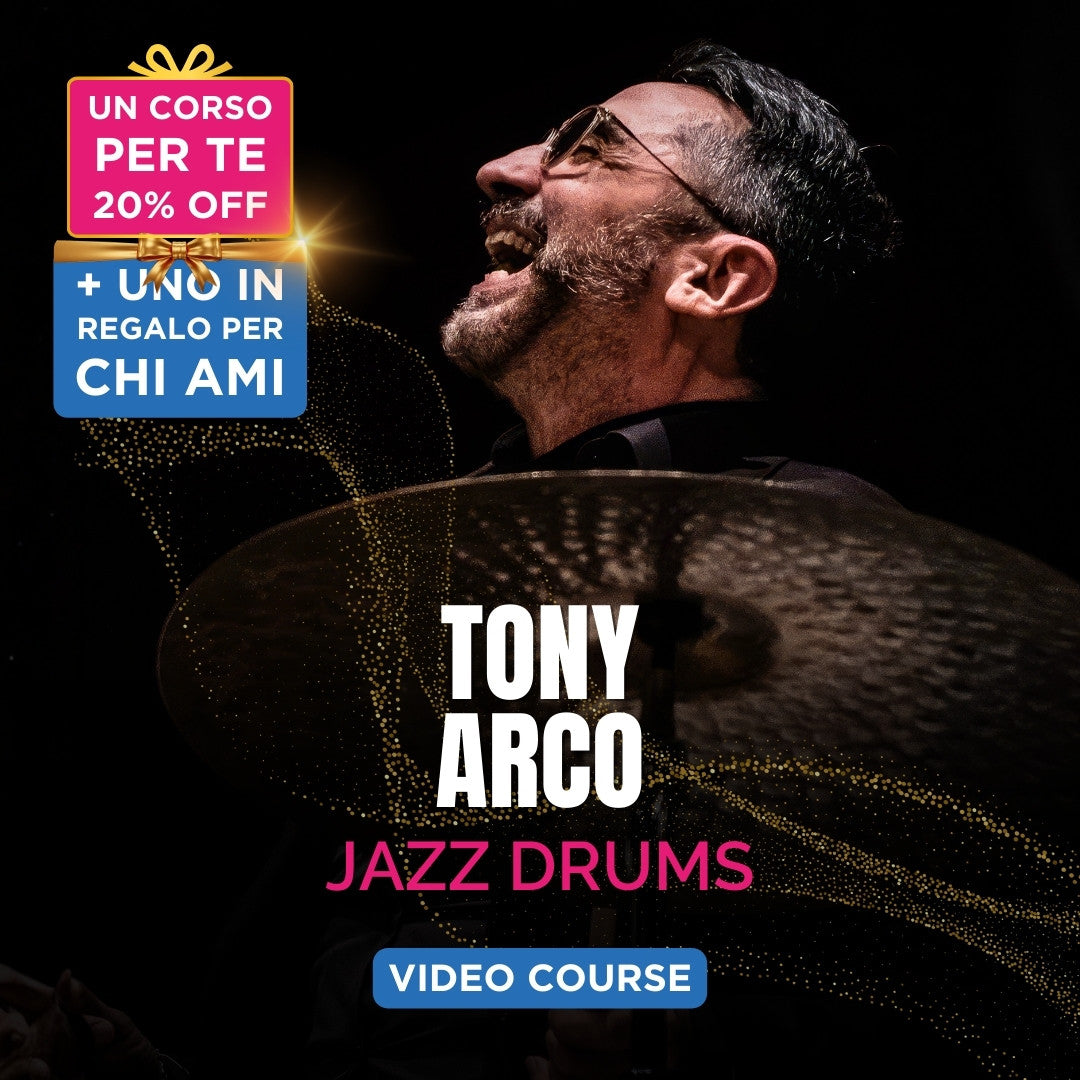

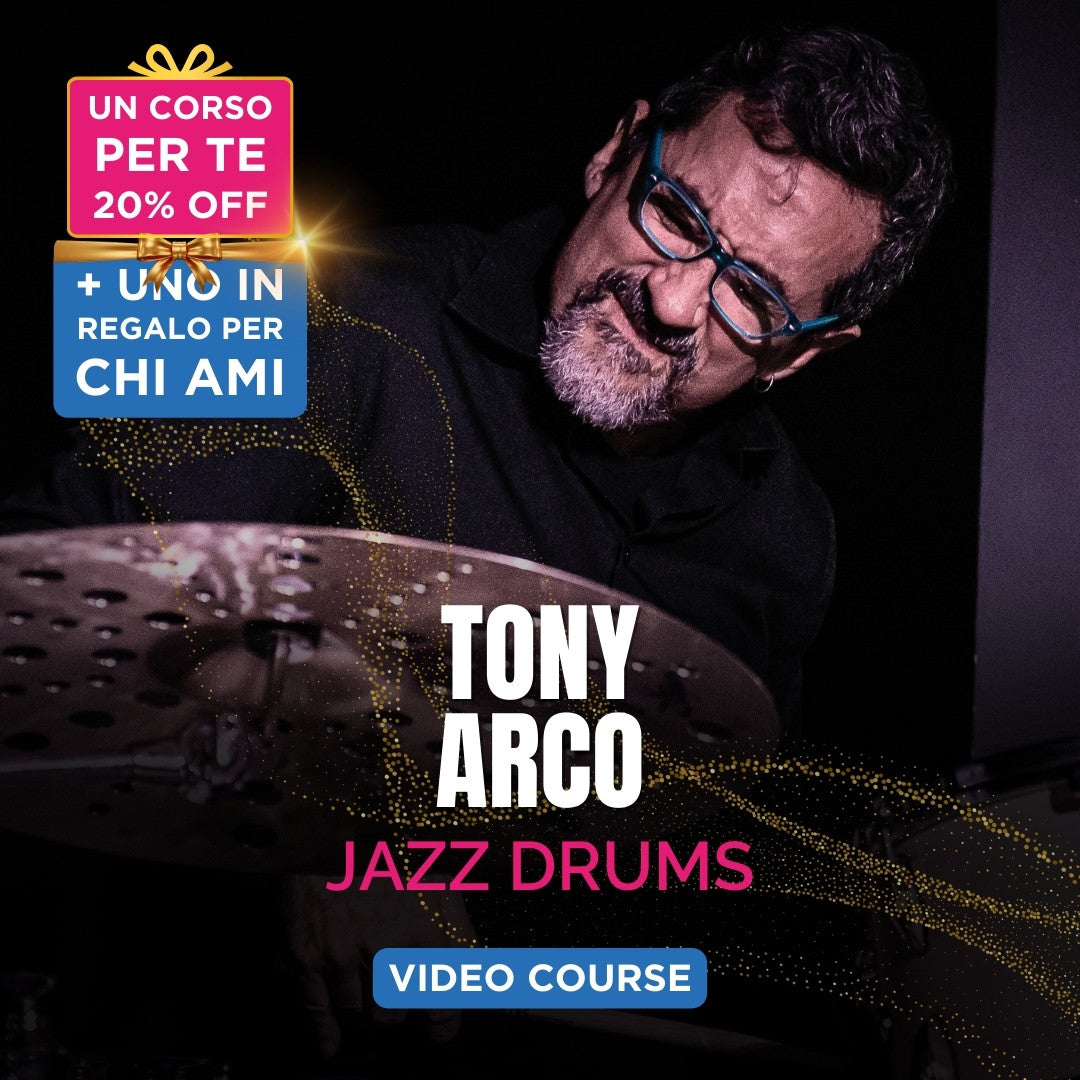
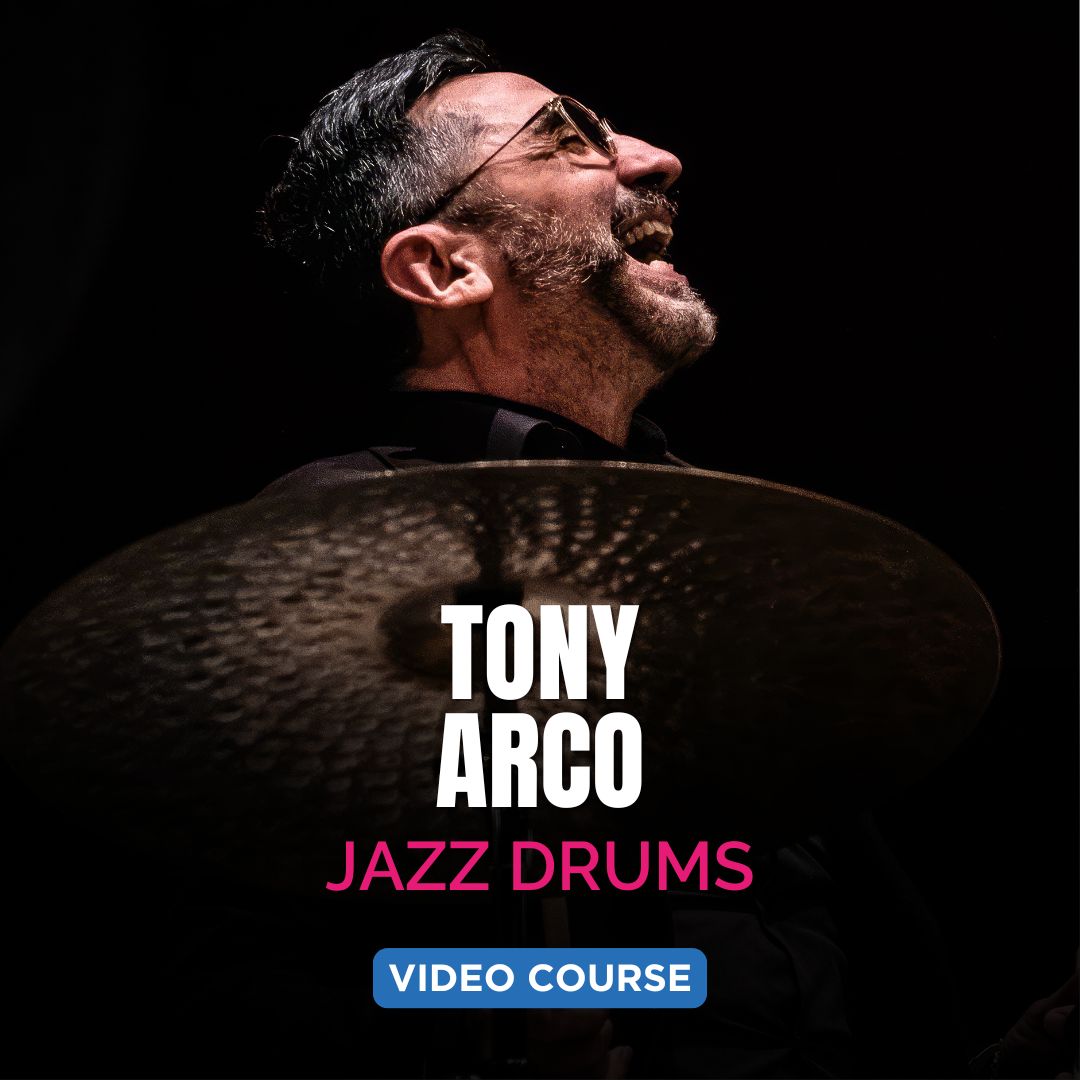
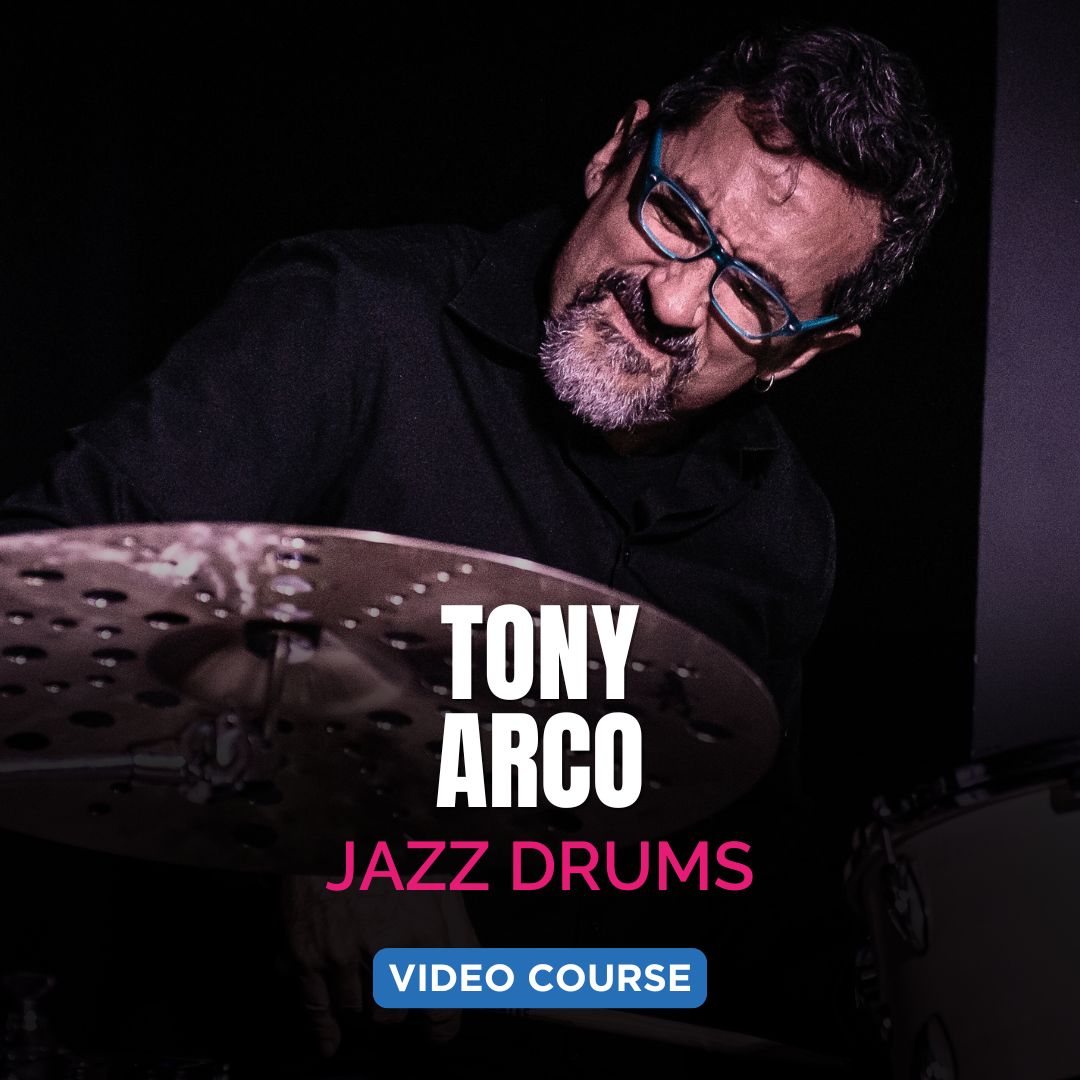

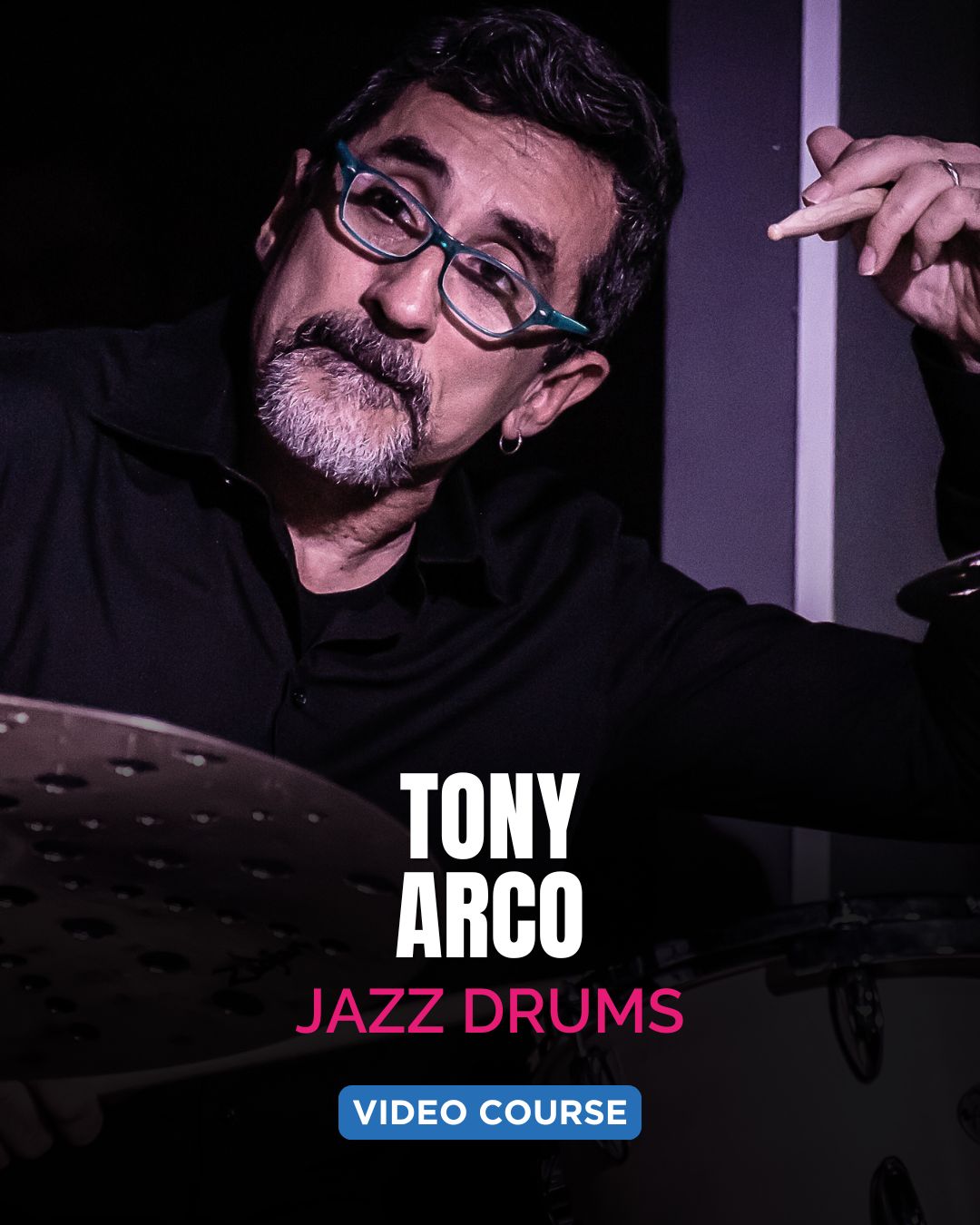
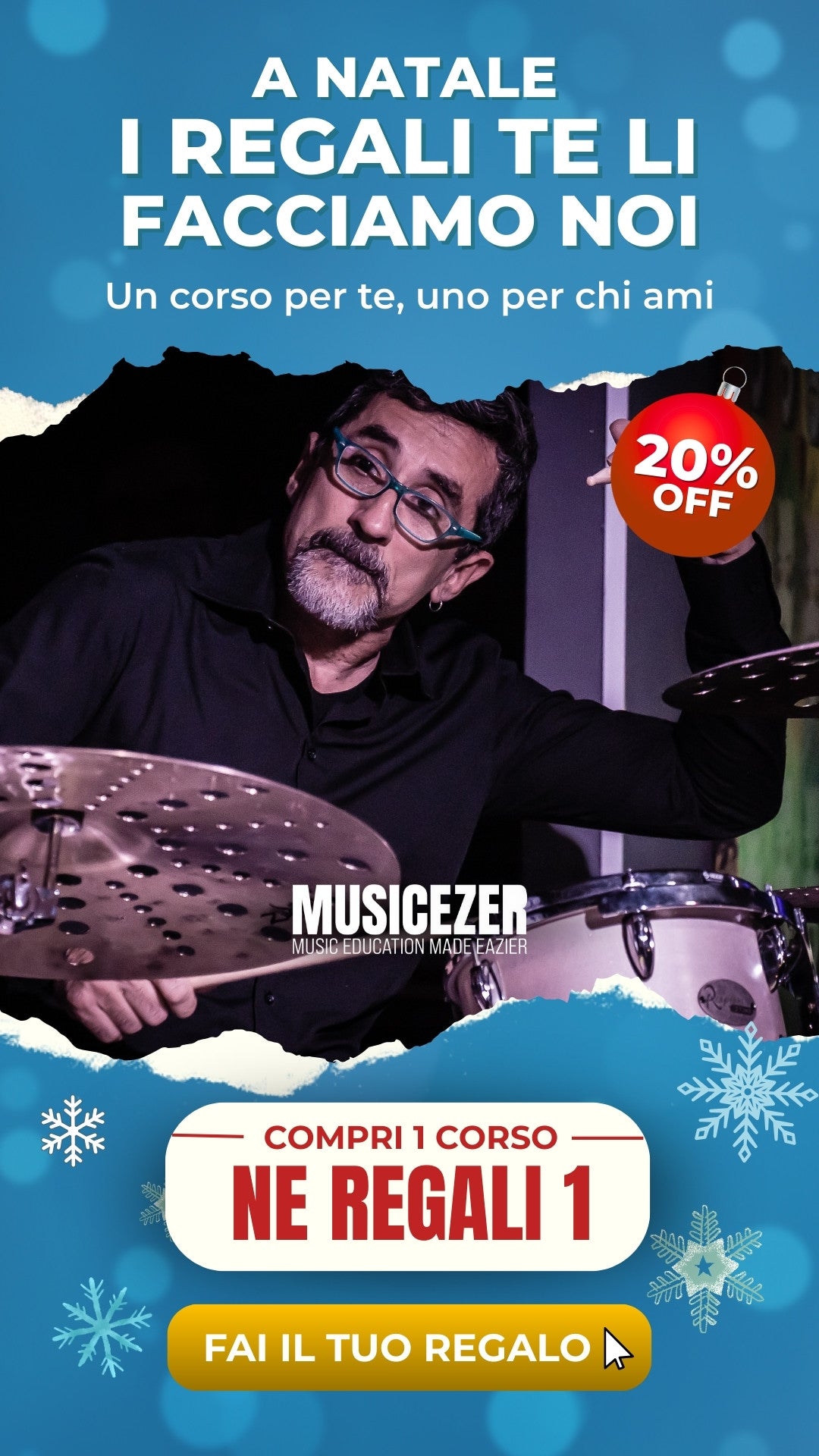
From the first stroke to expressive freedom: a course to understand and put into practice how drumming and jazz have evolved over the decades.
Attention to every detail allows us to offer an almost live learning experience with the teacher, directly in your home .
Once you purchase the course it will be yours forever and we will always be ready to offer you assistance to allow you to use it freely whenever you want.


COURSE DETAILS
"The Evolution of Drums in Jazz" is much more than a simple technical course: it is a reasoned and passionate journey through the history, aesthetics and deep mechanics of jazz drumming.
With the expert guidance of Tony Arco , one of the most authoritative musicians on the Italian and international scene, we will go through the key moments that marked the transformation of the drum language in jazz, from its roots to the freest and most contemporary forms.
The course starts from an analysis of the rhythmic foundations born in marching bands and New Orleans drumming, and develops by touching on the crucial stages of stylistic evolution: the role of the pedal in the birth of the modern set, the importance of swing feel , the independence of the limbs and the concept of time as a melodic flow .
Each lesson alternates historical references , practical exercises and personal reflections, with continuous references to the playing of masters such as Elvin Jones , Roy Haynes , Jack DeJohnette , Tony Williams and others.
The course is full of ideas drawn from the author's direct experience, with contributions from the teaching of figures such as Alan Dawson , Gary Chaffee and Bob Moses , transformed into concrete tools for developing coherent, dynamic and personal phrasing.
Complex topics such as non-independent drumming , lower limb dance , management of extreme speeds and free playing are also addressed.
All this with an eye always directed not only at the "how", but above all at the why of playing in a certain way, enhancing the most human and communicative aspect of jazz.
START NOWPersonal and historical introduction by Tony Arco, with a tribute to the great masters who shaped his language. The foundations of the course are laid by exploring the origins of jazz time, starting from the syncopated march as a stylistic foundation.
Analysis of the influence of military marches on the birth of jazz, with particular attention to the rudiments, the adoption of band instruments by African Americans and the transformation of rhythmic language towards syncopation.
Transition from military pronunciation to jazz groove, focusing on the circularity of movements, the roll dance and the emergence of new sound colors, also thanks to the use of ethnic instruments and 'contraptions'.
With the invention of the pedal, the drum kit becomes a multifunctional instrument: the 'one man show' is born, anticipating the complexities of bebop and laying the foundations for a new independence of the limbs in jazz drumming.
In-depth study of 'straight time' and introduction of the concept of 'pendulum swing'. The role of the constant pulse and the spring stick as the foundations of the groove, influenced by the interaction between African and European music, is highlighted.
Technical study on the oscillatory movement of the stick to generate swing. The fusion between rationality and instinct is analyzed, with practical exercises on the pad and on the cymbal, highlighting the importance of feathering and the backbeat of the hi-hat.
Observation of the different stylistic approaches of the great bop and post-bop drummers through the 'drumstick dance'. The connection between gestures, grip and rhythmic pronunciation is investigated, with examples on Kenny Clarke, Elvin Jones, Roy Haynes and Tony Williams.
The phrasing between snare, bass drum and hi-hat is developed as a coherent melodic language. Through Alan Dawson's 'short and long' method and didactic variations, an effective interplay between the rhythmic components of the drum kit is built.
Overview of the use of brushes in jazz: vertical, circular and horizontal approaches are analyzed in relation to pronunciation and performance context, with exercises to develop homogeneity of sound and perception of pulsation.
The concept of 'Drops' learned from Freddy Gruber is introduced, to improve lightness of touch and alignment to the pulse. This is followed by an exploration of 'Double Riding' as a tool to make phrasing more cohesive and aware.
The concept of the drums as a unique and melodic instrument, inspired by Elvin Jones and Jack DeJohnette, is explored. Through patterns developed by Gary Chaffee, the interaction between sticking and time articulation is worked on throughout the set.
The concept of non-independent drumming is introduced, a method learned from Bob Moses that frees phrasing from the rigidity of classical independence. The hands and feet work together melodically, with the right hand as the narrative guide.
The theme of groove as a central value in jazz drumming is addressed. The African-American root of the concept is analyzed, with a focus on the clave and dance as founding elements. An unpublished routine inspired by second line drumming is presented.
In-depth study of the dance of the lower limbs, with exercises aimed at developing elasticity and lightness in the movement of the drum. A coordination work between the pendulum of the hand and the oscillation of the foot is proposed, to obtain a more fluid groove.
The extremes of time are analyzed: slow and very fast. Specific approaches are proposed for each, such as the “opening the handle” movement for slow and the use of redundancy for extreme times, always aiming for relaxation and control.
Introduction to organic drumming and free playing with a metric basis. We work on temporal elasticity and free phrasing but anchored to time, with practical exercises to develop rhythmic fluidity and internal listening, inspired by Elvin Jones and Bob Moses.
The course concludes with a reflection on free improvisation as an emotional expression. The importance of deep communication in free playing is highlighted and a single ending is proposed as a synthesis of all the concepts covered.
COURSE EXTRACTS
COURSES ON MUSICEZER
95%
User satisfaction level
87%
Course completion level
STRENGTHS
An educational video path in 4K and HD audio , the complete booklet with all the transcriptions of the musical parts analyzed and played by Tony Arco , a point of reference for drumming in Italy and abroad.
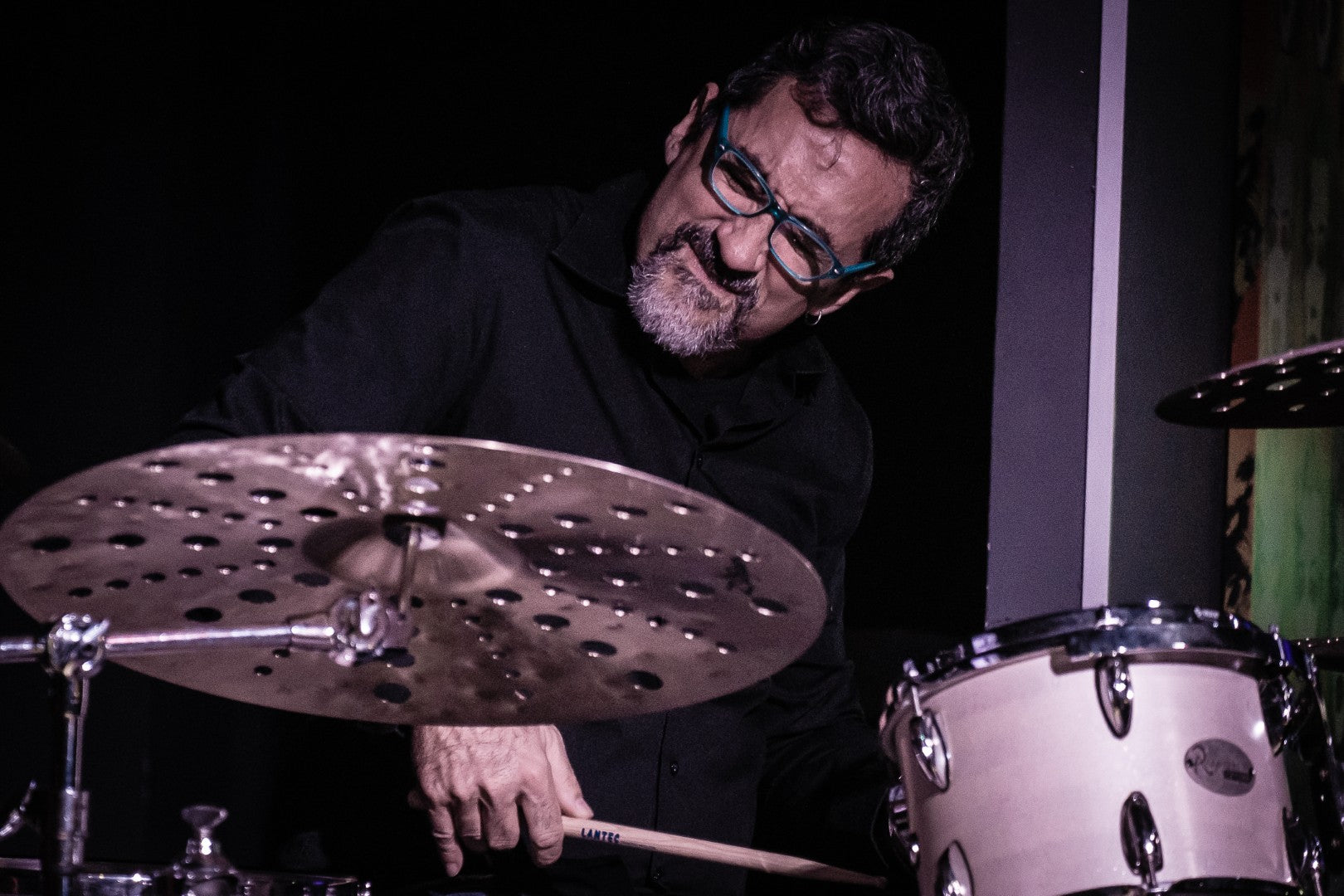
AUDIO/VIDEO QUALITY

A TOP MASTER

LEARN NOW!

TONY ARCO
Born in Milan in 1965, Tony Arco is an internationally renowned drummer.
After studying with Enrico Lucchini and Tullio De Piscopo , he perfected his skills in the United States with masters such as Gary Chaffee , Dave Weckl , Mike Mangini and Kenny Washington , and studied symphonic percussion with David Searcy .
He has collaborated with jazz giants including Dave Liebman , Enrico Rava , Franco D'Andrea , Billy Cobham , Marcus Stockhausen and Bob Mintzer , but also with Italian pop icons such as Lucio Dalla , Ornella Vanoni , Fiorello and Antonella Ruggiero .
He boasts over 100 recordings and personal projects such as the Tony Arco Quintet , Cues Trio and Time Percussion , also collaborating with foreign labels such as Verve .
He has worked with numerous big bands and symphony orchestras.
He is officially authorized by Gary Chaffee to teach his teaching methods.
BUT HOW MUCH DOES IT COST ME?
Accessible to everyone at a fraction of its real value!

